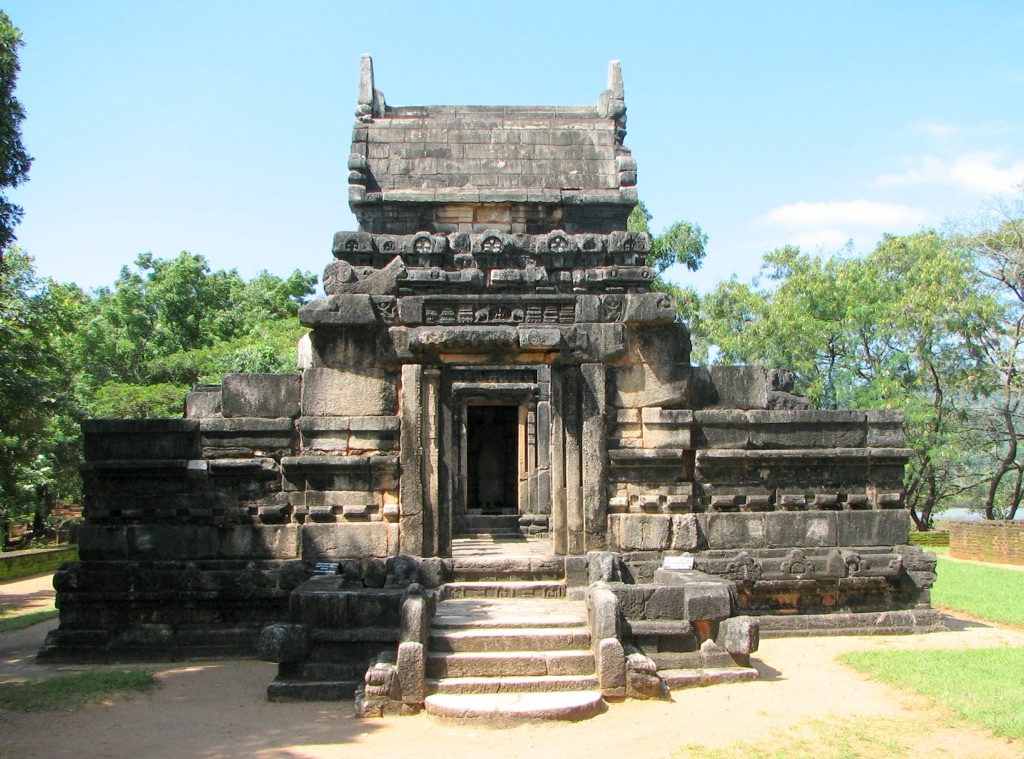Nalanda Gedige is an ancient and enigmatic edifice located in the heart of Sri Lanka. It is a remarkable fusion of Hindu and Buddhist architecture, which has puzzled historians and archaeologists alike. The structure is often admired for its intricate carvings and the synthesis of cultural elements. Nalanda Gedige’s exact origins are shrouded in mystery, but it is believed to have been a significant ceremonial site during its time. Today, it stands as a testament to the island’s rich and diverse historical tapestry.
Get your dose of History via Email
Historical Background of Nalanda Gedige
The discovery of Nalanda Gedige is a relatively recent chapter in Sri Lankan history. Archaeologists stumbled upon this architectural marvel in the 20th century. The site’s remote location had kept it hidden for centuries. The temple was initially covered in thick jungle growth, which preserved its intricate carvings and unique design. Sir William Henry Gregory, a British governor, is credited with the initial identification of the site in the 1870s.
Nalanda Gedige’s creator remains a mystery, but it is widely attributed to the period between the 8th and 10th centuries. The architectural style suggests that it was built during the reign of the Anuradhapura or Polonnaruwa kingdoms. These were eras when Sinhalese culture and art flourished in Sri Lanka. The temple’s design is a blend of Hindu and Buddhist elements, which was typical in the region during these periods.
Over the years, Nalanda Gedige has seen various inhabitants and uses. It is believed to have been a place of worship, initially for Buddhists and later for Hindus. The site’s strategic location at the center of the island made it accessible from various ancient capitals. This central position also suggests its importance in the religious and cultural activities of the time.
Historically, Nalanda Gedige has not been the scene of any major known events. However, its existence is significant as it represents the confluence of two major religions in the region. The temple serves as a physical record of the religious tolerance and syncretism that existed in ancient Sri Lanka.
The temple was relocated in the 1980s to save it from submersion due to the construction of a reservoir. This move further highlighted its importance and the government’s commitment to preserving Sri Lanka’s cultural heritage. The relocation allowed for more detailed studies and conservation efforts, ensuring that Nalanda Gedige remains an accessible piece of Sri Lanka’s historical puzzle.
About Nalanda Gedige
Nalanda Gedige is an architectural gem that showcases a blend of Hindu and Buddhist styles. The structure is modest in size but rich in detail. It is made primarily of stone, which has withstood the test of time. The temple’s design is reminiscent of South Indian architecture, particularly the Pallava style, which is known for its intricate stone carvings and elaborate sculptures.
The construction methods of Nalanda Gedige are a testament to the advanced skills of ancient Sri Lankan builders. The stones are precisely cut and fit together without the use of mortar. This technique, known as dry masonry, is a hallmark of pre-modern construction and requires a high level of craftsmanship.
Architectural highlights of Nalanda Gedige include elaborate carvings of Hindu deities, as well as Buddhist motifs. The temple’s entrance is adorned with a finely carved doorway, which is a focal point for visitors. The inner sanctum, or garbhagriha, once housed a sacred relic or statue, which is no longer present.
The temple’s layout is typical of Hindu temples from the period, with a mandapa, or hall, leading to the main shrine. The fusion of Hindu and Buddhist elements is particularly evident in the iconography. This includes depictions of both Hindu gods and Buddhist symbols, reflecting the religious syncretism of the era.
Despite its small size, Nalanda Gedige’s intricate carvings and unique design have made it an important site for the study of medieval Sri Lankan architecture. The temple’s preservation allows visitors and scholars alike to appreciate the artistry and cultural significance of this historical structure.
Theories and Interpretations
Several theories have been proposed regarding the purpose and significance of Nalanda Gedige. Some scholars believe it was a Mahayana Buddhist temple, which later became a Hindu shrine. This theory is supported by the mix of iconography present at the site.
There are mysteries surrounding Nalanda Gedige, particularly concerning its original deity or relic. The absence of historical records makes it difficult to ascertain the temple’s primary function. Some suggest it may have been a vedic observatory, given its precise alignment with the cardinal directions.
Interpretations of the site’s carvings and sculptures have had to be matched with historical records from similar periods. This has allowed historians to piece together a narrative of religious and cultural exchange. The temple’s artwork is a rich source of information on the iconography of the time.
Dating Nalanda Gedige has been a challenge due to the lack of inscriptions or datable artifacts. However, architectural analysis and comparisons with other known structures have placed it between the 8th and 10th centuries. Carbon dating of organic materials found at the site has also provided clues to its age.
The temple’s relocation in the 1980s provided an opportunity for more thorough archaeological studies. These studies have helped to confirm some theories about the site’s origins and usage. However, many aspects of Nalanda Gedige remain a puzzle, captivating the imagination of both the public and the academic community.
At a glance
- Country: Sri Lanka
- Civilization: Anuradhapura or Polonnaruwa period
- Age: 8th to 10th century AD

